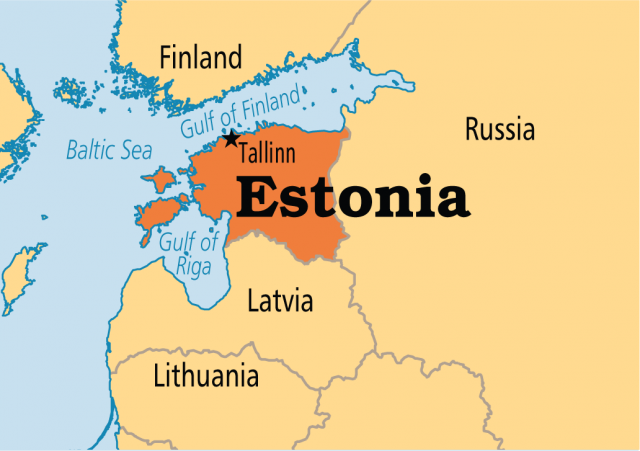Estonia
Area 16,852 square mi (43,211 square km)
Population 1.314 million 2014
Capital Tallinn
Highest Point 1,050 ft (318 m)
Lowest Point 0 m
GDP $25.90 billion 2014
Primary Natural Resources oil shale, peat, phosphorite, clay, limestone, dolomite.
FOR CENTURIES DOMINATED by its larger and stronger neighbors, since independence from the former Soviet Union in 1991, the small country of Estonia has shown itself to be the economic tiger of the former communist countries of Eastern Europe. The smallest of the three Baltic states, Estonia was the first to reintroduce its own currency and has managed to reduce inflation from 1,000 percent in 1992 to 2.8 percent in 1999 and unemployment to a mere 3.3 percent, well below the EUROPEAN UNION (EU) average. Having joined the NORTH ATLANTIC TREATY ORGANIZATION (NATO) in 2002, Estonians embarked on a new course, firmly directed toward the West, with membership in the EU dating from May 1, 2004.

Estonia is closely tied to the Baltic region, with a long coastline (2,618 mi or 3,794 km), including its northern coast on the Gulf of Finland and over 1,500 islands in the Baltic Sea. The largest of these are Saaremaa and Hiiumaa. Its neighbors include RUSSIA to the east, and LATVIA to the south, with FINLAND a short distance across the gulf (about 53 mi or 85 km) at its closest. Historically, the region was connected to other Baltic powers through sea commerce and the economic expansion of German merchants during the Middle Ages. Estonia's towns were essentially German for most of their history as members of the vast Hanseatic League, including its main city of Tallinn, formerly known as Reval. The area formed a province in the changing empires of the region, either Danish, German or Swedish, and finally Russian from 1721. The Estonian people themselves, sharing ethnic and linguistic affinity with the Finns (and, more distantly, Hungarians), generally populated the countryside and served as the agricultural labor force supplying the industry and trade of the Germanic towns. In the 19th century, however, Estonian nationalism stirred and began to clamor for an independent Estonia for Estonians. Yet as late as 1914, the so-called Baltic Barons, German noble landowners, still owned 90 percent of the large agriculture estates (60 percent of the total land) and dominated the cities as they had done since the Middle Ages. With GERMANY's defeat in 1918, Estonia declared itself independent, but this was short-lived, and the country was occupied by the Soviet Union in 1940, and formally declared a Soviet socialist republic.
The terrain is mostly flat and marshy in the north and west, becoming more hilly in the south and east. Bogs and wooded swamps cover a fifth of the country, and there are over 1,500 lakes. The largest of these lakes form part of the border with Russia, Lake Peipus and Lake Pskov. These lakes are connected by a channel, and flow out toward the Gulf of Finland through the Narva River. Vorts-Jarv is a large inland lake whose waters flow eastward into Lake Peipus, passing by Estonia's second-largest city, Tartu.
ESTONIAN INDUSTRY
The Narva corridor is also the center of Estonia's heavy industry, highly developed under the Soviet regime, with more investment per capita from Moscow than any other part of the Soviet Union. Estonian industry was geared to production of oil—from one of the world's largest deposits of combustible shale—and also military supplies. Leningrad, roughly 245 mi (395 km) away, became dependent on Estonia for gas and oil, but also relied on Estonia's fertile soils and dairy farms for its food needs, much as the city had done (as St. Petersburg) since its founding in the early 18th century.
Estonians remain wary of the large Russian population still living in Narva, while it converts the remains of the Soviet military industry to more useful products. Estonia has a very low population density, allowing much of the land to remain cultivated in small farms or left wooded for the second-largest economic activity, timber, paper, and furniture. Approximately one-third of the population lives in Tallinn. The fastest growth is occurring in service industries, such as tourism, trade and banking, and Estonia is becoming famous as a leader in e-government.